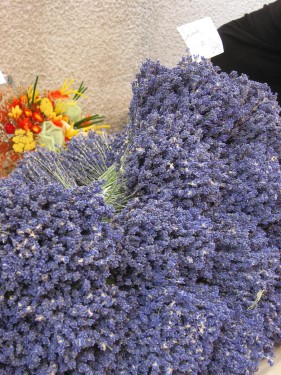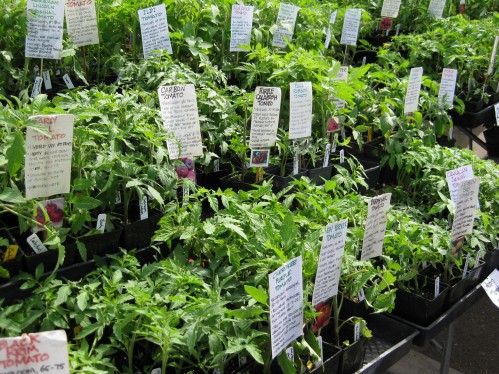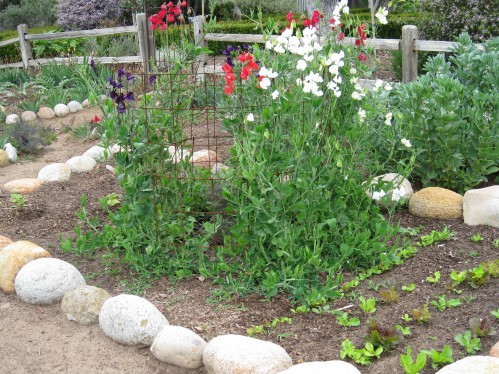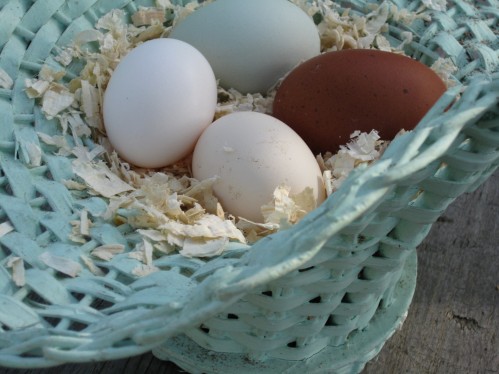 Special guest writer, Julie Mautner, shares with us her thoughts on cooking with lavender, assisted by a generous dollop from some of her favorite chefs. For those of you who miss Provence, or simply must feed your inner Provence fix, you will be charmed by her travel and food blog out of Provence, The Provence Post.
Special guest writer, Julie Mautner, shares with us her thoughts on cooking with lavender, assisted by a generous dollop from some of her favorite chefs. For those of you who miss Provence, or simply must feed your inner Provence fix, you will be charmed by her travel and food blog out of Provence, The Provence Post.
Julie Mautner has lived in St. Remy de Provence on and off for more than ten years. Prior to running off to the South of France, she was the executive editor of Food Arts Magazine in New York for ten years. Today she freelances for food and travel magazines and sites in the US and the UK. Her first book, The Food Network South Beach Wine & Food Festival Cookbook, will be published by Clarkson Potter in November 2010....VintageGardenGal
Here in the South of France, lavender looms large. You see it everywhere in summer and you smell it in the breeze. If it weren’t for lavender, the postcard and poster people might very well go broke. It's the rare gift shop that doesn’t sell lavender sachets or soap or sweets or something.
Provence produces nearly 80 percent of the world's lavender and the famously alluring flower blankets the countryside every June and July. Harvesting continues through September and is mostly mechanized although, in some areas, lavender is still cut by hand and collected in cloth sacks slung over the back. Today, about 20,000 acres of lavender flourishes annually in Provence, although most of it is reserved for the making of cosmetics and perfumes.
The early Romans and Greeks bathed in lavender-scented water and, to this day, most people associate the flowery scent with soap. The word lavender, in fact, comes from the Latin "lavare," meaning to wash. But lavender has always had its place in the kitchen as well. In the days before vanilla became available and affordable, cooks used a variety of different fruit and flower flavors. Lavender, for its part, was popular in teas, cakes, meat dishes, quick breads, biscuits and beverages. All lavenders are members of the Lamiaceae family, to which most culinary herbs (including mint, basil, oregano and sage) also belong. While English Lavender (Lavendula officinalis or angustifolia) is most commonly used for perfume and soap, it's usually French Lavender (Lavandula dentata) that's found in the kitchen.
Cook with lavender as you would with most herbs: go lightly at first, then add more as needed. The darker the blossom, the more intense the flavor.
“Use restraint,” cautions Joe Simone, chef/owner of The Sunnyside Restaurant in Warren, Rhode Island, just outside Providence. “Lavender is extremely potent. Using too much will make whatever you cook taste like your grandmother's lingerie drawer.”
“I love lavender and used to grow a bumper crop back when I still had a garden,” says Nick Malgieri, director of baking programs at the Institute of Culinary Education in New York. “It has always been a small element in herbes de provence and I think this is the key to using it in cooking and baking - a pinch or two along with other aromatic flavors, rather than a full-on assault of lavender alone.”
Indeed the most common use of lavender flowers is in the seasoning mixture called herbes de Provence. To this blend of thyme, savory, basil and fennel, lavender adds a perfumey and slightly musky taste, along with a hint of citrus, which makes it ideal for use with fish, grilled meats and stews. Chefs also use it in red sauces for pasta or pizza, and it makes a good garnish on salads and entrees.
Throughout Provence, you'll come across lavender on many restaurant menus, in dishes both savory and sweet. At L'Hostellerie du Val de Sault, chef/owner Yves Gattechaut loves the taste of lavender with lamb. One dish he loves is a lamb carpaccio with homemade lavender vinegar, served with beignets d'herbe. He also makes lamb cutlets topped with a sauce that's been subtly tinged with lavender. "If you visit this region in summer," Gattechaut says, "you can't possibly ignore the color and smell of lavender. It is blue and gold everywhere you look...it's absolutely inspiring."
In the village of St.-Remy, at the restaurant La Serre, chef Serge Gille-Naves serves monk fish in a daube or a fricasee, lightly perfumed with lavender, or he'll wrap the fish in parchment and bake it along with lavender, lemon and butter. Using a recipe developed by his grandfather, the famed patissier Gaston Lenotre, Gilles-Naves adds lavender to his pain d'epice, along with anise and orange, to give it a depth of flavor not usually found in a simple spice cake.
Lavender has found favor with American chefs as well. Chef Joe Simone likes to drop a few grains of it into his marinades and dry rubs, and he uses it for "pickling" certain vegetables. (For instance, he’ll marinate paper-thin slices of fennel in simple syrup and rice wine vinegar, with just a touch of lavender.)
In North Miami, Allen Susser of Chef Allen’s loves to serve lamb with a fennel-and-lavender crust. To make the crust, he toasts the fennel seeds, along with cumin and black peppercorns, and then crushes them when cool, along with lavender and a little fresh garlic. “The aromatics complement each other,” Susser says. “The lavender adds a rich, flowery depth to the earthy anise flavor of the fennel.”
At the Milwaukee Country Club, chef Olivier Bidard loves the subtle taste of lavender with fish and seafood, but stresses that it's important to use a sweet, meaty fish. With fresh sea scallops or arctic charr, for instance, Bidard will make a beurre blanc-type sauce using white wine, shallots, butter, a dash of lemon and lightly blanched fresh lavender. (Dried lavender is fine too.) "The taste and smell of lavender with fish always reminds me of summer at home in France," he says.
Desserts, however, are where lavender is most lovely. A lavender-tinged creme anglais is delicious, hot or cold, over cake, fruit or any other dessert. Add a pinch of lavender to sugar cookies or a simple frosted cake, or use it to flavor ice cream. Patricia Wells' offers up a divine lavender honey ice cream in her book At Home in Provence, while Amanda Hesser suggests a simple lavender sorbet, inspired by Jean-Michel Bouvier, chef/owner of L'Essential in Chambery, France, in The Cook and The Gardener.
“Lavender’s aromatic strength pairs well with lemon zest and vanilla in anything custardy,” offers Nick Malgieri. “And a small amount added to cracked black pepper and orange zest for poached pears would be perfect.”
Indeed lavender pairs well with fruit, especially raspberries and blueberries. Joe Simone loves to toast angel food cake and serve it with a syrup of summer berries and lavender.
Simply take a bowl of fresh berries, adds a little superfine sugar, a pinch of lavender and a dash of orange blossom or rose water, then refrigerate for a few hours. (Orange blossom water and rose water can be found at gourmet groceries and Middle Eastern markets.) Then slice the cake, broils it until golden and serve topped with the berry syrup.
While Simone prefers to buy his lavender from a local organic farm market and dry it himself, he says a high-quality store-bought product is fine.
“I spent the most marvelous week in Provence a few years ago,” he adds. “And when I’m feeling a bit of withdrawal, I’ll break out the lavender in my kitchen. All those amazing tastes and smells just come rushing right back to me.”
Please share if you cook with lavender. Please share your experience with lavender in Provence.









